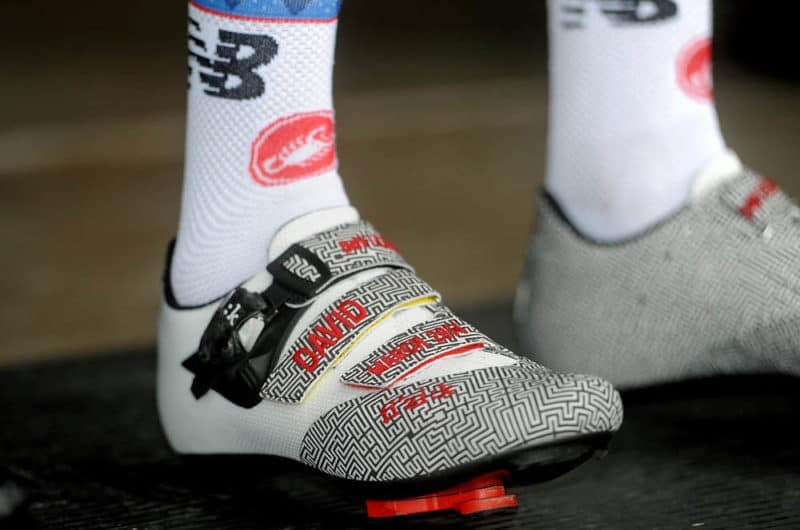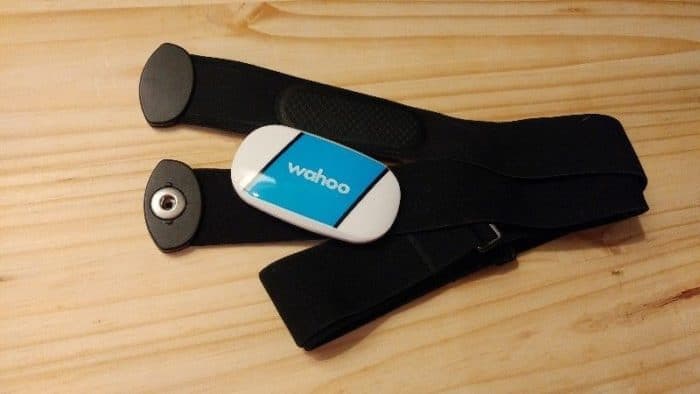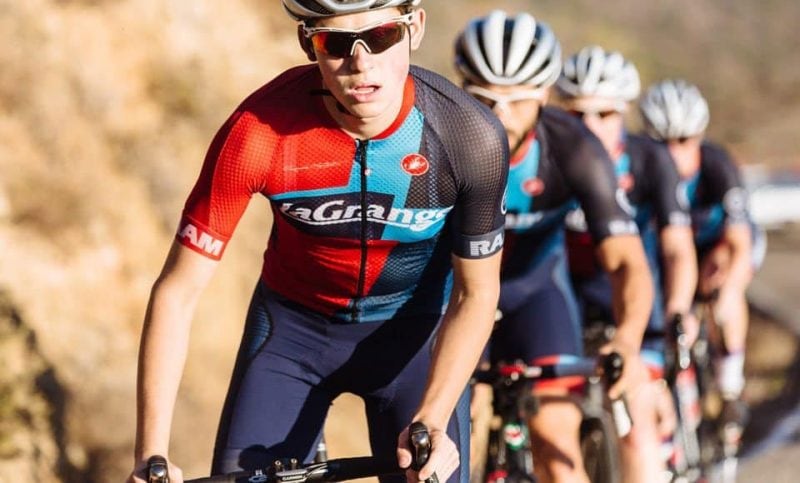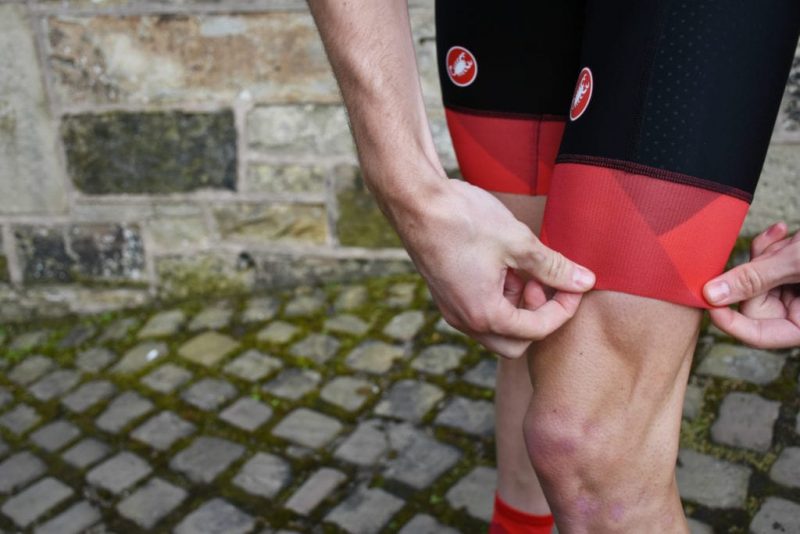How to Ease Lower Back Pain While Cycling
As a cyclist and someone who has suffered from low back pain, I can attest to its debilitating effects. It took an activity I love and turned it into something else.
Your biggest fear may be that it won’t ever go away. I shared the same sentiment. But don’t worry, my pain disappeared and most likely yours will too. Every situation is unique, but chances are you’re experiencing nothing more than a brief setback.
The important question now is what you can do about it?
We’ll investigate the why and how of low back pain. You’ll be upright and riding pain free before you know it.
What Causes Lower Back Pain?
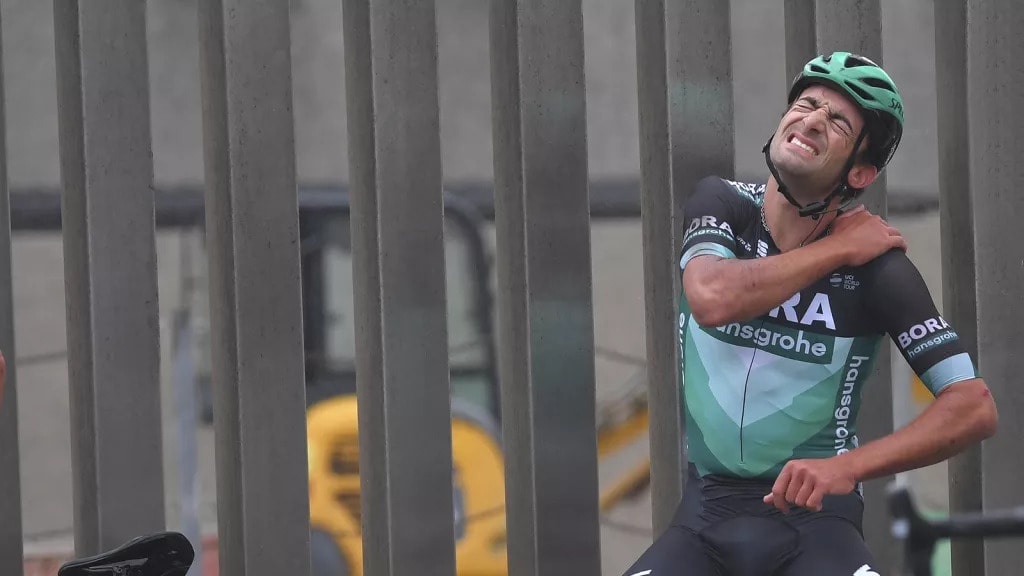
Cycling is considered a low-impact sport and one that is commonly part of a rehabilitative exercise program for back-pain sufferers. Yet low-back pain is the number one trauma recorded for cyclists according to a Norwegian study.
So what gives?
Rider position, overuse, and weak core muscles are the primary causes.
You may be new to the sport with a desire to be competitive and hang with your buddies who are stronger riders. It was your motivation to get a bike in the first place, right?
Rome wasn’t built in a day.
Experienced riders have years of pedaling memory and endurance in their bodies, your admirable expectations are unrealistic and may cause your low back pain.
Before investing in a new bike, you borrowed one from a friend. You’re close in size but distributed differently. What fits them isn’t great for you, but you wanted to make it work.
How bad could it be?
The resulting low back answered that question for you. Your riding position on the wrong sized bike is causing stress on your body manifesting itself through your low back.
Read More : Should I Get A Custom Bike?
These are just a few examples of what may be causing your woes. The good news is that most have simple remedies that will ease your pain and get you back on the road.
How to Ease Low Back Pain
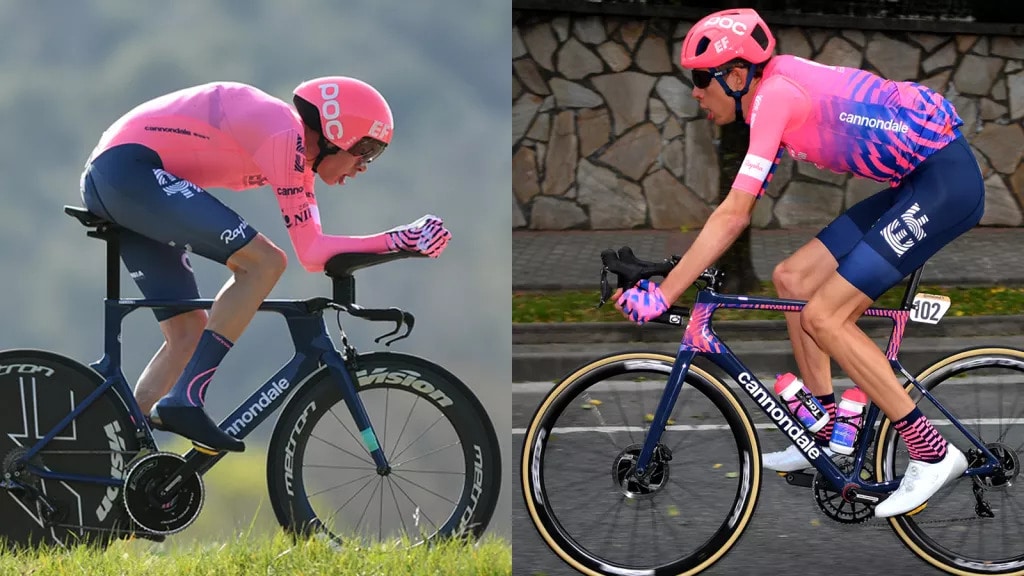
Sometimes the answer isn’t about the bike, but more about the rider. And how our bodies tolerate being bent over and flexed in a forward position.
What are the effects on the muscles in our back that hold us there for hours under effort? Is it better to bend more at the hip, or the spine?
Look at the backs of the pros next time you watch a race. You’ll see some with backs rounded like cats as they pedal vs others you could serve a drink on.
Cyclists who tend toward a rounder position, which involves more of the spine, statistically experience more low back problems. The answer to easing your pain is strengthening your core and focusing on your position on a bike that fits.
Strengthen Your Core
Your core holds you up and in position on the bike. Strengthening helps you ride faster and avoid back pain.
Cyclists are weakest in the trunk and upper body, and these core exercises are tough but replicate actions in and out of the saddle, calling on your abs and back muscles.
They take a few minutes twice a week, and a stability ball, which trains your balance, to perform most of them.
- Planking. Instead of being static on the floor, perform your plank between a stability ball and a chair to work the truck muscles and practice your balance.
- Rolling Bridge. Place your hands on the floor and your feet on a stability ball. Balancing will be a challenge. Once you’ve got that down, try rolling the ball forward and back with your feet, or side to side.
- Bent Knee Back Extension. Block your feet against a wall and knees on the balance ball. Pivot from the hip as you extend and flex your back.
- Stability Ball Dips. Perform dips with your hands on the stability ball behind you, legs out in front, bent at the knees in a sitting position.
- Windshield Wipers. Find chin-up or parallel monkey bars. Hold yourself in the air, knees bend and together, now move from side to side at the waist.
Get A Professional Bike Fit
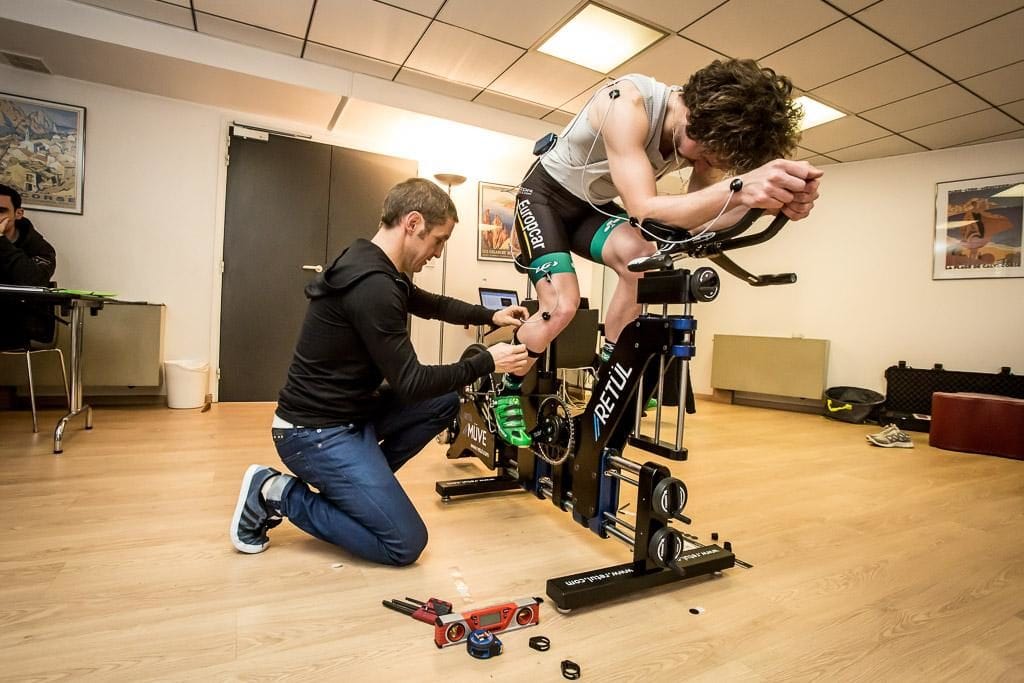
When you’ve determined it isn’t you, it’s gotta be the bike. Riding one that isn’t your size opens a can of worms regarding fit.
A frame that’s too big with a longer top tube stretches you out, straining your back. Too small and it forces the back to curve more, putting greater pressure on the spine.
And how about that saddle height and position?
A professional bike fit is the answer to your woes and always a good idea before you purchase a bike. Fit professionals can tell you what size, and often what brand, is best for you.
If you’ve done the deed and it’s already yours, a bike fit can make the difference between an okay fit with pain, or a great one that’s pain-free.
Read More : 5 Things to Know Before Getting A Bike Fit
Ramp Up the Mileage Slowly
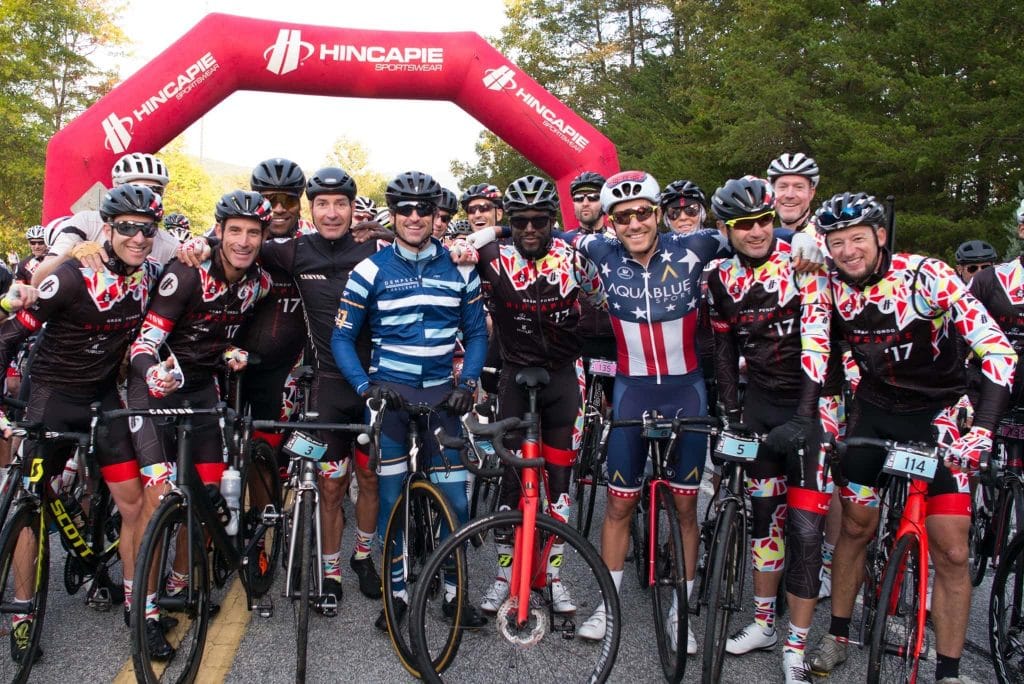
Cycling is an endurance sport. No matter how great you are in another sport, it’s impractical to presume that you can ride hard for 50 to 100 miles out of the gate.
It’s a theory known as the specificity of exercise and your body, muscles, and nervous system need to learn a new language of cycling.
Be patient, stamina doesn’t come overnight. Start out easy, slowly increase your mileage and the amount of climbing you do.
Riding a lot of hills in a short period leads to back pain. Try to put the bike away while you still feel good and want to ride. It’s a great motivator for your next outing and will keep you pain-free as you progress.
Read More : 5 Tips for Your First 100 Mile Bike Ride and Gran Fondo
Stretch After Each Ride
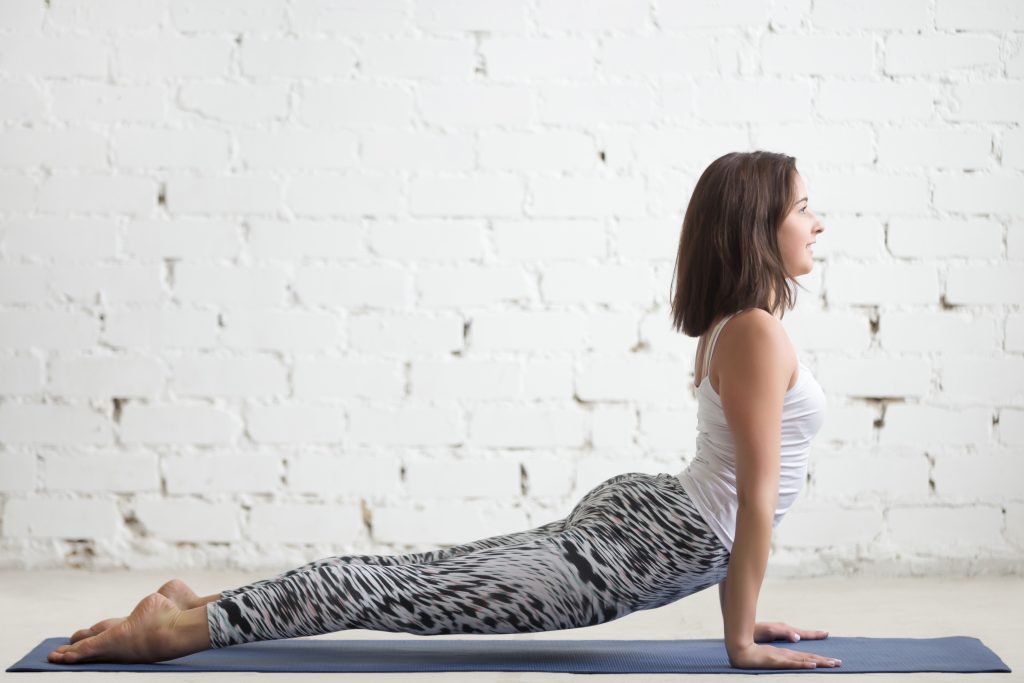
Yoga may not be your thing, but there’s a reason this activity has lasted for centuries. Flexibility is the key to a healthy skeletal and muscular system that allows us to live injury-free.
Sounds great, doesn’t it?
I want to stretch, but I never get around to it. We lose flexibility as we age, so make a resolution to add it to your cycling activity.
Tight, overworked muscles on the bike lead them to compensate in other ways to get the job done. It can cause joints, tendons, and ligaments to work outside of their normal plane and cause you pain. Stretching after each ride will relax muscle tension and keep you flexible, injury and trouble-free.
Try these five popular cycling stretches (click on the link to view the videos).
Ride Between 80 to 90rpm
Research on different riders shows that 80 to 90 rotations per minute are an optimum cycling cadence, especially for climbing.
However, it remains only a guideline. What is good for some may not be best for you. You need to find your sweet spot and it will depend on how you feel and your cardiovascular fitness.
- Lower cadences (below 80rpm) require more force that fatigue muscles more rapidly. The added pedaling force on tired muscles leads to low back pain.
- Higher cadences (above 90rpm) demand a greater heart rate and a certain level of fitness we don’t all possess.
There is no shortcut to finding your ideal rhythm. Experience and trial and error will define yours.
Read More : Should You Use A Compact Crankset?
Get A Standing Desk and Ergonomic Office Chair
A massive number of people have switched from a traditional office to working at home in a less than anatomically ideal posture. Working at the kitchen table, or seated on the couch with the computer on your lap is not conducive to proper posture. Low back and neck strain are standard complaints from home offices everywhere.
But it doesn’t have to be that way.
Height adjustable desks are an investment and money well spent. A flick of the switch and presto!, you switch from seated to standing, it’s the secret to breaking up long hours of stationary work and possibly the solution to your low back pain.
You can make your own too. As someone who writes a lot, don’t forget the anatomical keyboard.
Author Recommended Reads

